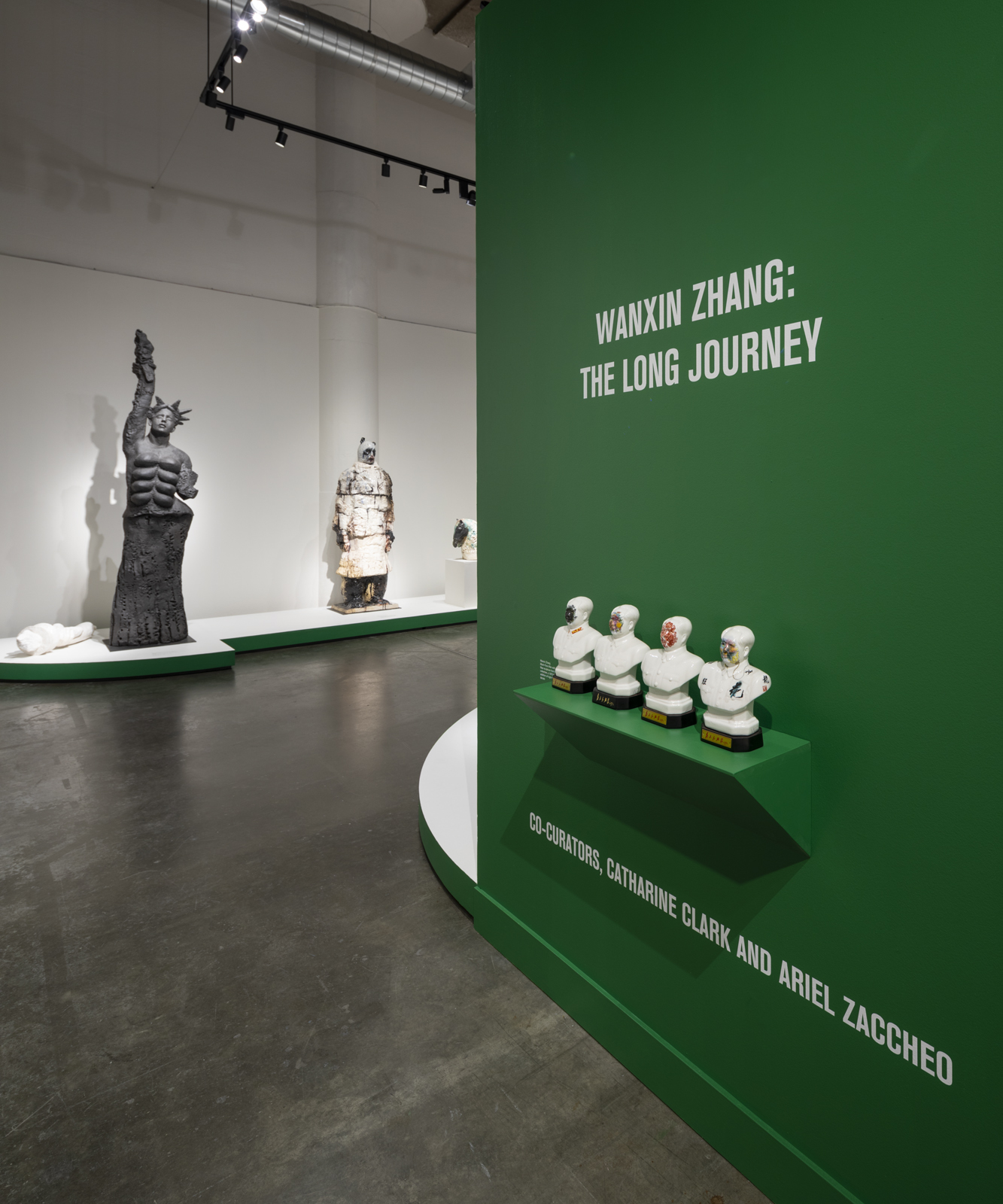wanxin Zhang: The Long Journey
Born in Changchun, China, Wanxin Zhang began elementary school two years after the onset of the Chinese Cultural Revolution (1966-1976). During this period, Mao Tse Tung’s image was plastered on Chinese streets and in schools. After Mao’s death in 1976, Zhang was among the first generation to receive a formal art education in China. After studying at LuXun Academy of Fine Art and Jilin Art School, he began his art career overseeing municipal sculptural projects and teaching at Jilin Art School in Changchun.
In the early 1980s, Zhang visited the site of the excavated Terracotta Army of the Qin dynasty. The army existed to protect Emperor Qin. Many of the hundreds of thousands of laborers who made the sculptures had been buried alive to protect the secrecy of the burial site. Witnessing the warrior sculptures would prove an important catalyst to Zhang’s work, as the brutality behind them bore a striking resemblance to Mao Tse Tung’s ruthlessness.
In 1992, Zhang moved to California to study at the Academy of Art University in San Francisco. Here, he drew influence from the California Funk Movement led, in part, by practitioners Robert Arneson, Stephen de Staebler, Viola Frey and Manuel Neri; as well as such masters of clay as Peter Voulkos. Combining his experience of the Terracotta Army with the individualism and expressiveness exemplified by these California artists, Zhang produced a series of modern-day warriors in high-fired clay, inventing a unique visual language. Over the last 25 years, Zhang has continued his involvement with academia as an educator for art departments throughout the Bay Area, helping to shape a new generation of ceramists and sculptors.
After Zhang’s migration, globalization made China a leading manufacturer, a blossoming market economy and—later—the tenuous trading partner and adversary of the Trump administration. The two empires Zhang has called home have given agency to his work. Moving beyond the warriors in his oeuvre, the artist explores political issues such as tariff wars, immigration, homelessness, racism, marriage equality and ecological concerns through the kaleidoscope of his cultural memory.
Blatantly and humorously, he lampoons both capitalist and communist leaders in such works as A New King (2017), a stoneware, slip-cast and porcelain bust wherein a crowned facade fades into vacuous emptiness. Originally owned by Zhang’s family, the four Mao busts featured in this exhibition have been amended with colorful decals, glazes and additional clay.
The warriors, Mao busts, pandas, abstracted landscapes of his homeland, horse and riders, boxers, bricks and teapots are all relics of Zhang’s journey, from the rule of a dictator to the prized individualism of the United States. Oscillating between humor and solemnity, Zhang’s references meander across borders, through time and among ideologies.
As the artist expressed in a conversation with Deborah Bishop, essayist for the accompanying exhibition catalog, “I want my work to represent my life’s experience along my long trek from the East to the West.”
Photo © Henrik Kam, 2019
Photo © Henrik Kam, 2019
Photo © Henrik Kam, 2019
Photo © Henrik Kam, 2019
Photo © Henrik Kam, 2019





